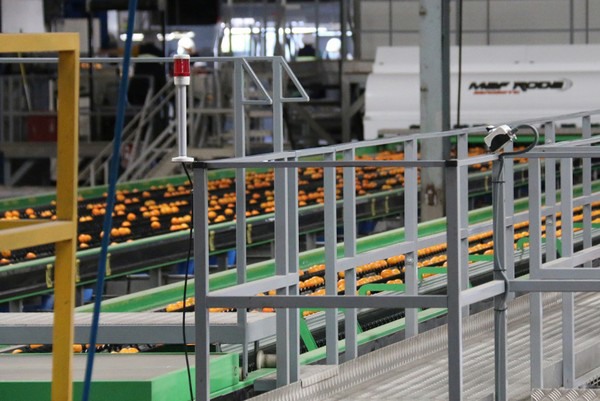The Spanish orange and mandarin campaign is now nearing its end. It has been marked by periods of oversupply, overlapping varieties and competition from other origins in the case of mandarins, and by high pressure from Egypt in the case of oranges.
"The first part of the campaign, up until Christmas, was characterized by a low supply of fruit in the markets," says Jorge García Monfort, commercial director of García Ballester, based in the Spanish municipality of Burriana, in the province of Castellon. "In the case of clementines, a slight decrease in the production and mild temperatures caused the fruit to ripen slowly, so market conditions have been very good, with high prices for the producers and for the stores."

"However, although it is usual for it to rain in December and for part of the production of the Clemenules (the most planted variety) to be lost, this year the weather has facilitated the fruit's preservation in the field with good quality conditions up until the end of January, so there has been some overlap with the start of the Clemenvilla and the first Tango and Nadorcott, whose production, like most second-season varieties, has been record-breaking this year," says the producer and exporter.
"At the same time, there has also been a high production of Comune clementines from Italy and shortly after, large quantities of fruit from Turkey, Greece, Morocco, Croatia and Egypt entered the market. Until now, Egypt had been associated only with oranges, but its mandarin production has been growing notably, especially those of the Tango and Murcott," says Jorge García. "Although the demand has remained steady, prices plummeted for all varieties due to the high supply."
Only by mid-March did the market become a little emptier. "By mid-April, when Morocco finished, sales picked up again. And the fact is, if we compare Spain with other third-country origins, our fruit is more expensive due to higher production and labor costs. When we are relatively alone, we have the capacity to obtain profitable prices for the entire value chain, but it is impossible to compete with countries with such low costs," says Jorge García.
The mandarin harvest has also been marked by the unusual presence of seeds in the fruits of almost all varieties, commonly known as "pinyolà" in Valencian. "One of the varieties that have escaped this is the Leanri, whose campaign has been truly successful, with stable prices. It is an interesting variety for the period when it arrives. Its organoleptic quality is similar to that of the Orri, although with better sizes. There have been only 4 commercial campaigns of Leanri so far, but the trees are still young (up to 7 years old), and the production is expected to grow in the coming years," says the producer and exporter.
"As for the oranges, the campaign started very well for the Navelina, which found its place in the market after the end of the South African supply, and was marketed for very good prices until January. Then the market became flooded with oranges from Egypt, which in addition to having a growing market share in Europe, redirected a lot of its shipments there due to limitations in exporting to the Middle East and Far East because of the conflict in the Red Sea," says Jorge García.
"Therefore, it has been very difficult for the Salustiana and Valencia oranges, which Egypt produces with quite an acceptable quality and sells for really aggressive prices. However, we have managed to keep the sales of Navel family oranges at good levels," he says. "It is clear that the presence of third countries will tend to continue rising in the coming years and it will become increasingly difficult for Spanish citrus (both oranges and in mandarins) to compete from January to early March."
For more information: Jorge García Monfort
Jorge García Monfort
Garcia Ballester
C/ Partida Vintems s/n
12530 Burriana, Castellon. Spain
Tel.: +34 964 571 025
jgarciamonfort@garciaballester.es
www.garciaballester.es
